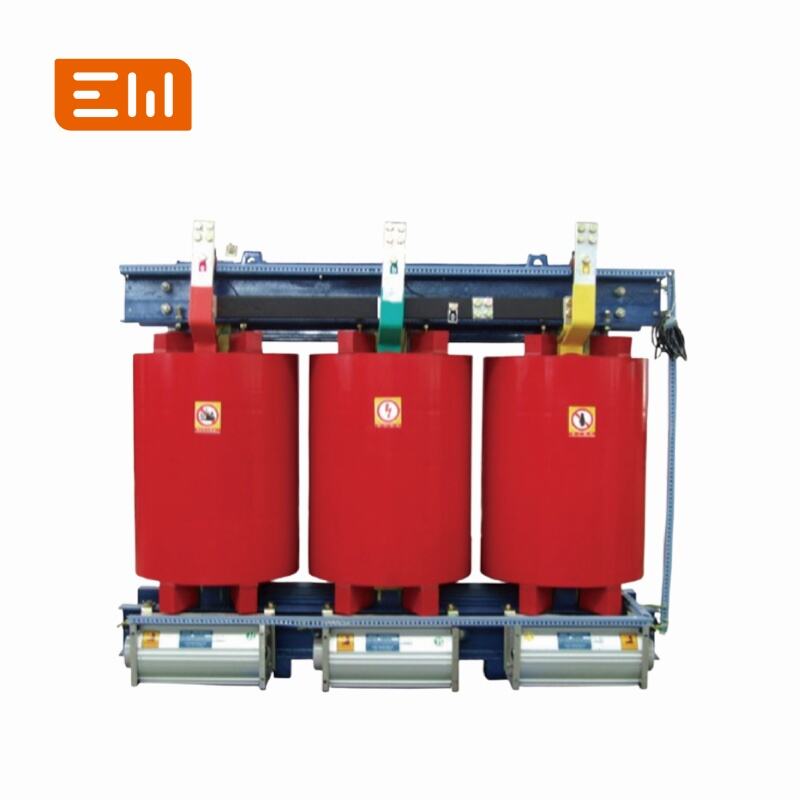Troubleshooting Common Issues in Dry Type Transformers
Dry type transformers are known for their high reliability and low maintenance needs. However, like any piece of electrical equipment, they can occasionally exhibit symptoms that indicate an underlying issue. Being able to identify and troubleshoot these common problems can prevent costly downtime and extend the life of the transformer.
SAFETY FIRST: Troubleshooting should only be performed by qualified electrical personnel familiar with transformer safety procedures. Always de-energize and lock out the equipment before conducting any physical inspections or tests.

Issue 1: Transformer is Overheating
Overheating is one of the most common and potentially damaging issues. The transformer feels excessively hot to the touch, may emit a burning smell, or temperature gauges show readings above the normal operating range.
Potential Causes & Solutions:
-
Overloading: The load connected to the transformer exceeds its kVA rating.
Solution: Measure the load current. If it exceeds the transformer's full load amps, you must either reduce the load or upgrade to a larger transformer. -
Blocked Ventilation: Dust, debris, or nearby objects are obstructing the enclosure's air vents, preventing proper cooling.
Solution: De-energize the transformer and thoroughly clean the vents and winding ducts as outlined in our maintenance checklist. Ensure proper clearance is maintained around the unit. -
High Ambient Temperature: The temperature of the room where the transformer is located is too high.
Solution: Improve the ventilation of the electrical room. Add fans or an air conditioning system to bring the ambient temperature within the transformer's specified operating range. -
Loose Connections: A loose connection in the primary or secondary terminals creates high resistance, generating significant heat.
Solution: De-energize the unit and perform an infrared thermal scan to identify hot spots. Tighten all connections to the manufacturer's recommended torque values.
Issue 2: Excessive Noise (Loud Humming or Buzzing)
All transformers produce a normal audible hum due to magnetostriction (the expansion and contraction of the core as the magnetic field changes). However, a sudden increase in noise or a loud buzzing sound can indicate a problem.
Potential Causes & Solutions:
-
Loose Core or Windings: The bolts clamping the transformer's core or supporting its windings may have become loose due to vibration over time.
Solution: De-energize the transformer and tighten all accessible hardware to the correct torque specifications. -
Vibration Transmission: The transformer's natural vibration is being amplified by the structure it is mounted on.
Solution: De-energize and install vibration-dampening pads between the transformer base and the floor or mounting structure. -
Overloading or DC Offset: Severe overloading or the presence of DC current in the AC system can cause the core to saturate, leading to a loud noise.
Solution: Check for overloads. Investigate the source of the DC offset, which can sometimes be caused by faulty electronic equipment connected to the system.
Issue 3: Incorrect Secondary Voltage
The output voltage is consistently too high or too low, even under normal load conditions.
Potential Causes & Solutions:
-
Incorrect Tap Setting: The transformer's voltage taps were not set correctly during installation to match the actual primary voltage.
Solution: De-energize the transformer. Measure the primary source voltage and adjust the tap settings according to the transformer's wiring diagram to produce the desired output voltage. -
High or Low Primary Voltage: The voltage being supplied to the transformer from the utility is outside the expected range.
Solution: Contact your utility provider to investigate the issue with the incoming power supply. -
Severe Overloading: A heavy overload can cause a significant voltage drop.
Solution: Measure the load. If it is excessive, the voltage will likely recover once the load is reduced.
Conclusion: When to Call a Professional
This guide covers basic troubleshooting steps for common issues. Simple solutions like cleaning vents or adjusting tap settings can often resolve problems. However, for any issue involving internal components, persistent overheating, or if you are ever unsure, it is crucial to contact a qualified transformer service technician or the manufacturer.
Attempting complex repairs without the proper expertise can lead to further damage and create serious safety hazards. For support with any https://www.enweielectric.com/products/transformers/dry-type-transformers">Enwei Electric transformer, please https://www.enweielectric.com/contact-us">contact our technical support team immediately.

